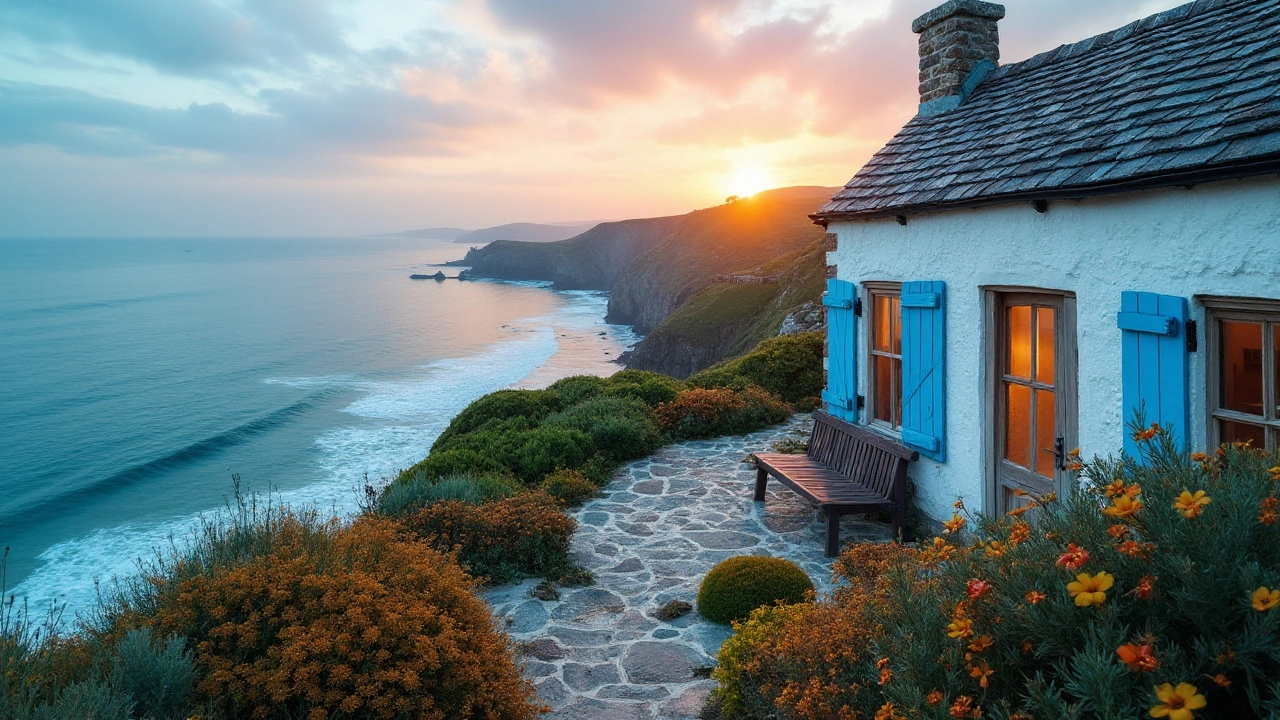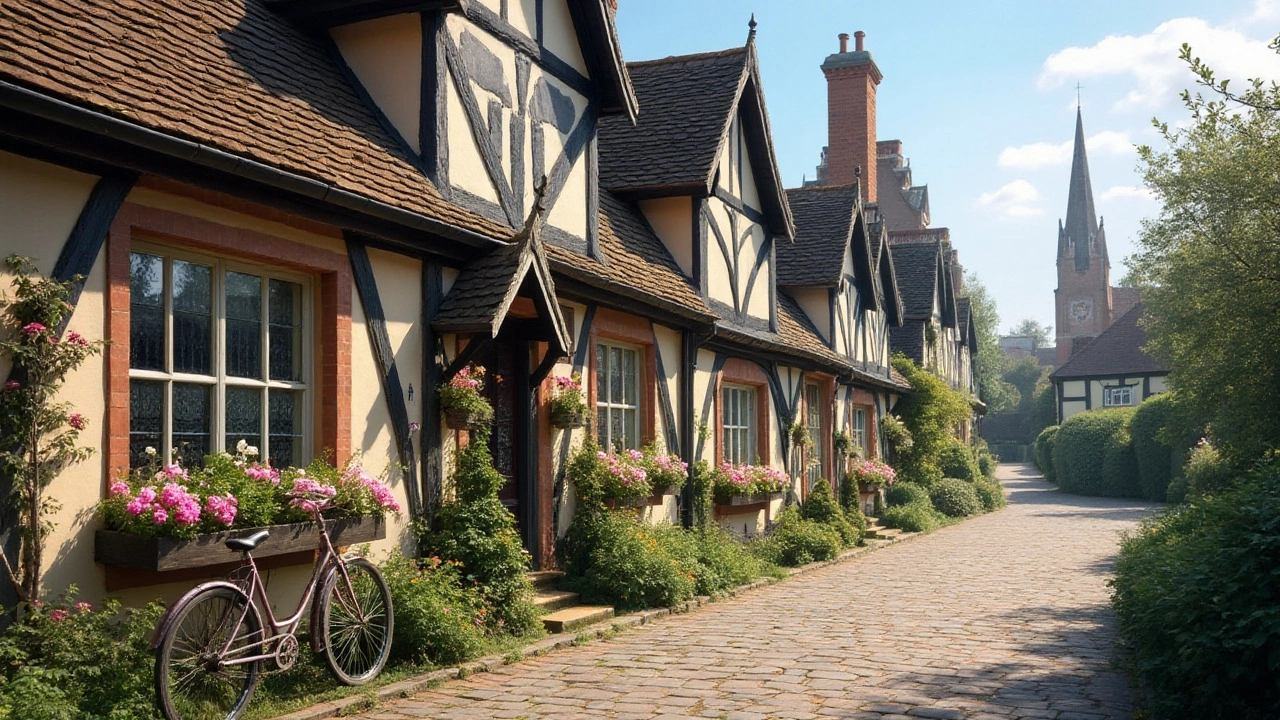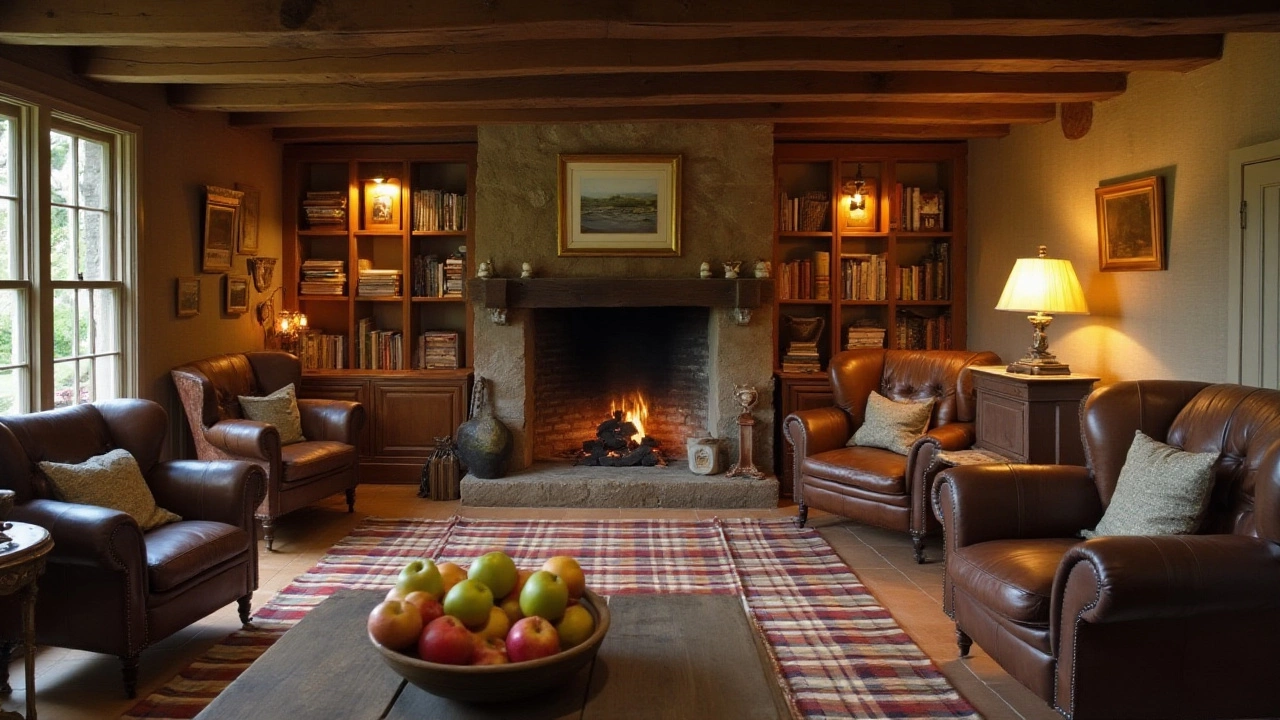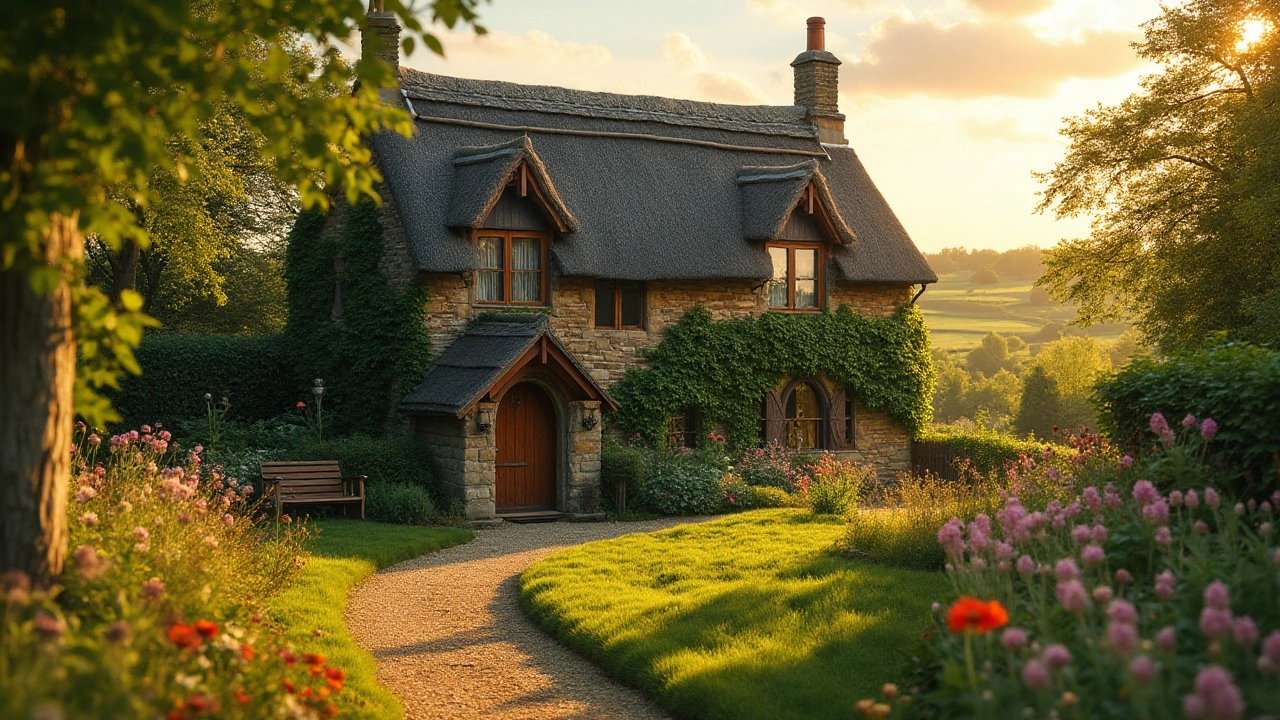The word ‘cottage’ evokes images of quaint, snug houses surrounded by lush greenery or perhaps overlooking a scenic waterfront. But where did this charming term originate, and why do these compact abodes hold such a special place in our hearts? Today, the concept of the cottage has transcended its historical roots, evolving into a beloved icon of rustic warmth and simplicity.
The journey of the cottage begins in medieval England, where the term was used to describe the homes of rural workers known as 'cotters.' These homes were often small, simple dwellings built on farmland, epitomizing the essence of medieval agriculture and communal living. Over the centuries, cottages have undergone a fascinating transformation, yet they continue to enchant us with their storybook charm.
In the modern world, cottages are more than just remnants of a bygone era; they have become a desirable escape from the hustle and bustle of urban life. With their distinct architectural styles varying from region to region, cottages now serve as idyllic holiday retreats. Whether you’re planning a spontaneous getaway or searching for a serene retreat, cottages provide a welcoming refuge unlike any other.
- The Etymology of 'Cottage'
- Historical Significance of Cottages
- The Evolution of Cottage Design
- Cottages as Last-Minute Vacation Retreats
The Etymology of 'Cottage'
The term 'cottage' carries with it an enduring charm that harks back to simpler times, yet its roots dive deep into the annals of history. Originating from the medieval English word ‘cotter,’ cottages were diminutive dwellings that were primarily home to rural laborers. The cotters, who occupied these cozy homes, often worked on the lands belonging to the nobility. They were a crucial component of the feudal system, and their homes, which they often shared with animals, were symbols of their status.Cottages were more than just shelters—they were homes rich with odors of freshly-cut grass and hay, where nights cast shadows through the cracks.
Etymologically, ‘cottage’ finds its lineage in the Latin word ‘cottagium’ or the Old French ‘coquet’. Over centuries, these intertwined linguistic roots informed its usage, gradually shaping the term we know today. A fascinating transition occurred during the Industrial Revolution. As urbanization took hold, the nostalgic appeal of the country’s quaint cottages spurred on a romanticized vision of rural life among Britain’s burgeoning city dwellers. In literary and poetic representations, popularized by authors such as Thomas Hardy, cottages began to symbolize simplicity and a romantic return to nature.
"The cottage stood humble in its stature but grand in the lush embrace of nature – a sanctuary from the world’s haste.” – A well-known saying captures this idyll beautifully.
This transition from a functional agrarian home to a desirable retreat is mirrored across various cultures and countries, yet the essence remains the same. The architectural nuances can vary, yet the underlying warmth, simplicity, and beauty imbue all cottages with that unmistakable magnetic charm. It wasn't until the late 19th century that cottages emerged as holiday homes, a trend predominantly among the upper classes, who sought escape from industrial cityscapes to the serene countryside for relaxation and leisure.
The history of cottages is also richly tied to folk traditions and agrarian lifestyles, embodied in the very materials used for construction. Wattle and daub, thatch, and cob stone were among the commonly used local materials, lending each cottage a unique character reflective of its region. Understanding this evolution, both linguistic and cultural, reveals not only the transformation of the cottages themselves but also our ongoing relationship with them as symbols of peace and retreat. As trends in lifestyle continue to evolve, the allure of cottages remains steadfast, encapsulating the stories of family, community, and comfort – a testament to their enduring magic and appeal.

Historical Significance of Cottages
The history of cottages dates back to medieval England, where they served as essential dwellings for rural workers known as 'cotters.' These small, humble homes were typically built on plots of farmland, creating a symbiotic relationship between the architecture and the agrarian lifestyle. Initially, a cottage comprised a basic structure with one or two rooms and a thatched roof, providing minimal comfort but maximum utility for its inhabitants. The concept of the cottage quickly became intertwined with rural life, where it acted as both the home and workspace for those who toiled on the land, forging a deep connection with nature.
Across the British Isles, cottages were tailored to their immediate environment, showcasing regional architectural variations that added to their unique charm. In the Cotswolds, for instance, cottages were constructed using locally sourced limestone, lending them their characteristic honey-colored hue. Meanwhile, in Scotland, cottages were designed to withstand harsher climates, often featuring thick stone walls and slate roofs. This adaptability to local conditions highlights the ingenuity of historical builders and the deliberate attention to detail that endears cottages to us today. During the 16th and 17th centuries, the significance of cottages extended beyond mere housing. They became a symbol of social status and community, where families lived and worked together, fostering strong social bonds. This sense of community was integral to the cultural fabric of the countryside. Families often passed down cottages through generations, creating a legacy of connection to the land. In many regions, cottages came to symbolize stability and continuity, providing a sense of belonging that modern life sometimes lacks.
By the 19th century, the romanticization of rural life began to take hold, further elevating the status of cottages in the cultural consciousness. Influential figures such as William Morris advocated for a return to simpler living and traditional craftsmanship, championing cottages as quintessential embodiments of these ideals. The Arts and Crafts movement, with its emphasis on artisanal work and harmony with nature, found a natural home in the cottage design. Many artists and writers idealized cottage life as an antidote to the industrialization rapidly sweeping across Europe.
Morris once said, 'The past is not dead, it is living in us, and will be alive in the future which we are now helping to make.'This sentiment resonated with many and nurtured a cultural movement that celebrated the humble cottage as a refuge from the frenetic pace of urban living. Today, cottages are coveted not only for their historical significance but also for the soothing simplicity and timeless appeal they offer. They continue to capture the imagination of many, a testament to their enduring place in both our hearts and history. Whether nestled in a picturesque village or overlooking rolling hills, cottages stand as proud monuments to a way of life that emphasizes harmony with nature, community, and the enduring connection to one's roots.

The Evolution of Cottage Design
Cottage design, much like an ancient tapestry, is woven with threads of history, culture, and evolving human needs. The quaint cottages we admire today bear little resemblance to their medieval predecessors, yet the essence of simplicity, function, and cozy charm continues to define them. The earliest cottages, dating back to medieval Europe, were modest shelters for serfs working on the lands of feudal lords. These primitive structures were primarily constructed from wattle and daub—a mix of wooden strips and a sticky material like clay or mud. Roofs were typically thatched, providing both insulation and durability, a design feature that would become emblematic of cottage design.
As society progressed through the Renaissance and into the early modern period, so did the architectural elements of cottages. During this time, the Industrial Revolution played a pivotal role in transforming cottages from basic shelters to homes with greater structural and aesthetic sophistication. Brick and stone began to replace mud and thatch, lending these homes a sense of permanence and stability. The Victorian era, in particular, saw the rise of ‘Gingerbread Cottages’ in America, adorned with ornate trim and complex rooflines, a testimony to both advancing technology and the decorative tastes of the era. It was during this era that cottages began to be seen not just as functional homes but as picturesque symbols of rural idealism.
“The cottage is the cozy cradle of rustic living,” noted Hubert de Givenchy. “Within its walls lies a retreat from the mechanical pace of city life.”
The 20th century brought about further evolution, integrating the conveniences of modern living into these historically grounded structures. The Arts and Crafts movement, originating in late 19th-century Britain, thrust cottages into the spotlight by emphasizing traditional craftsmanship and simple form. This movement reintroduced the handmade quality in cottage construction, paving the way for bespoke design elements and personalized interiors. Often, wood and stone were used to blend the cottages seamlessly into their natural surroundings, fostering a deep sense of tranquility and charm. As technology advanced, so did the incorporation of electricity, indoor plumbing, and heating systems, making cottages increasingly desirable vacation choices in both Europe and America.
In recent years, sustainability has become a cornerstone in the design landscape, leading to innovations that keep cottage living relevant in an environmentally-conscious world. Solar panels, green roofing materials, and the upcycling of timber from older structures are just a few of the eco-friendly practices now common in cottage renovation and construction. Modern architects and designers are eschewing the extravagant in favor of the essential, harking back to the roots of cottage design with open-floor plans and multifunctional spaces. This resurgence of interest in minimalist, responsible design is not just an aesthetic movement but a lifestyle choice, reflecting a profound longing for harmony with nature.
The evolution of cottage design is not merely a journey through architectural styles, but a reflection of our changing lifestyles and values. From humble agricultural origins to chic retreats, cottages have undergone a transformation that mirrors our own societal advancements, while still preserving a timeless connection to the past. Today, they serve as a beloved reminder of the simplicity we often yearn for amidst our hectic modern lives, offering both literal and metaphorical shelter from the storm.

Cottages as Last-Minute Vacation Retreats
Today, more than ever, the allure of a spontaneous escape to a tranquil cottage is undeniable. The frenetic pace of life can often leave us yearning for a quick, rejuvenating retreat, and what better way to unwind than with the rustic charm of a cozy cottage? These idyllic abodes, often set amidst serene landscapes, provide an antidote to modern chaos and offer a peaceful respite where time seems to slow down. From the rugged coastal hamlets to the rolling hills of the countryside, cottages are becoming increasingly popular for those seeking a last-minute getaway. Not only do they offer a respite from the concrete jungles, but they also deliver an intimate connection with nature and simplicity.
Recent trends have shown a significant increase in short notice bookings for these charming accommodations. The convenience of online rental platforms means you can organize an impromptu trip with just a few clicks, making the idea of last-minute cottages not just feasible but brilliantly accessible. In fact, data from travel agencies indicate that such bookings have risen by nearly 25% in the past couple of years, as people seek to escape the stressful routine and immerse themselves in more laid-back environments. It's an attractive option for families, couples, or even solo travelers who are keen to explore new destinations without extensive planning.
According to Travel Weekly, "The versatility and the homely feel of cottages make them ideal for vacationers looking for the perfect balance between comfort and adventure."
Perhaps the most appealing aspect of choosing a cottage for your last-minute retreat is the authenticity and distinctive character each one offers. Unlike impersonal hotel rooms, cottages reflect the unique local culture and history through their architecture, furnishings, and sometimes even their landscapes. Imagine cooking in a kitchenette with a wood-burning stove or enjoying a cup of tea on a vintage porch overlooking green pastures or sandy beaches. These experiences create a profound sense of place and belonging that is hard to replicate with any other type of accommodation.
Additionally, cottages cater to a wide range of preferences and budgets. Whether you’re looking for a luxury countryside escape complete with elegant amenities or a rustic retreat off the beaten path, there is something for everyone. Families with pets will also be delighted to find pet-friendly options, allowing the whole gang to enjoy the escape together. And with various sizes ranging from intimate two-person nooks to spacious family residences, your short-notice needs can be easily met without compromising on comfort.
If spontaneous adventure calls, consider embracing the delightful escape to a cottage. Beyond just location, they offer memorable experiences that rekindle our connection with simpler times and provide the perfect backdrop for relaxation and reflection. Whether by the sea, amid woodland retreats, or nestled in quaint villages, these beloved abodes promise a unique, unforgettable moment for every traveler. It’s not just a stay but a delightful journey into serenity and nostalgia.
